
Mazesoba (Mazemen) - Japanese Brothless Ramen
Mazesoba or mazemen is a delicious Japanese brothless ramen from Nagoya. The chewy noodles are mixed with seasoned minced pork, sous vide egg yolk, and aromatic toppings. With a creamy texture and savory flavor, it really hits the spot!
Servings: 2
Calories: 675kcal
Ingredients
For the Seasoned Pork
- 1 Tbsp toasted sesame oil
- ½ lb ground pork (use meatless crumbles or tofu for vegan/vegetarian)
- 1 clove garlic
- ½ tsp ginger (grated; from a 1-inch, 2.5-cm knob)
- 1 Tbsp sake
- 1 Tbsp doubanjiang (spicy chili bean paste)
- 1 Tbsp soy sauce
- 2 tsp oyster sauce (use vegetarian stir-fry sauce for vegan/vegetarian)
- 1 tsp sugar
- 3 Tbsp chicken stock/broth (use vegetable broth for vegan/vegetarian)
- ¼ tsp Diamond Crystal kosher salt
For the Other Toppings
- 2 green onions/scallions
- 1 small bunch garlic chives (Chinese chives or nira) (1 oz, 30 g)
- 3 packets katsuobushi (dried bonito flakes) (each individual packet contains 2 g; skip for vegan/vegetarian)
- 1 sheet nori (dried laver seaweed)
- 2 cloves garlic
For the Noodles
- 2 servings fresh ramen noodles (I used Sun Noodle Mazemen fresh noodles)
- ¼ tsp Diamond Crystal kosher salt (for seasoning the noodles)
- 1 tsp toasted sesame oil (for seasoning the noodles)
For Serving
- 2 Tbsp tenkasu/agedama (tempura scraps)
- 2 large egg yolks (In Japan, raw eggs are safe to consume; you can buy pasteurized eggs or sous vide your own eggs for safety; you can also use Onsen Tamago, Soft-Boiled Egg, or poached egg; skip for vegan/vegetarian)
Instructions
- Gather all the ingredients. Bring a large pot of water to a boil. Once boiling, turn off the heat and cover until you‘re ready to cook the noodles. Prepare the toppings and seasoned pork while you‘re waiting for the water to boil.
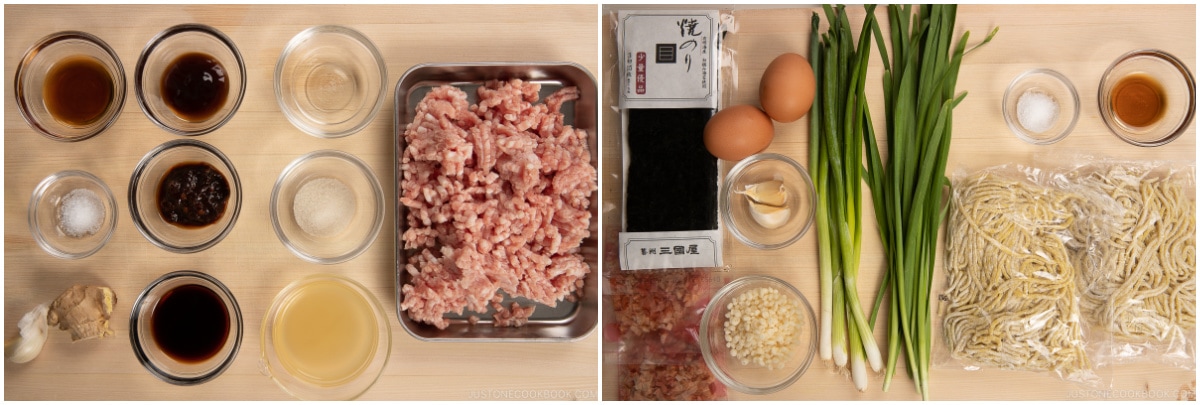
To Prepare the Toppings
- Thinly slice 2 green onions/scallions. Cut 1 small bunch garlic chives (Chinese chives or nira) into pieces ⅛ inch (3 mm) wide. Set them aside.
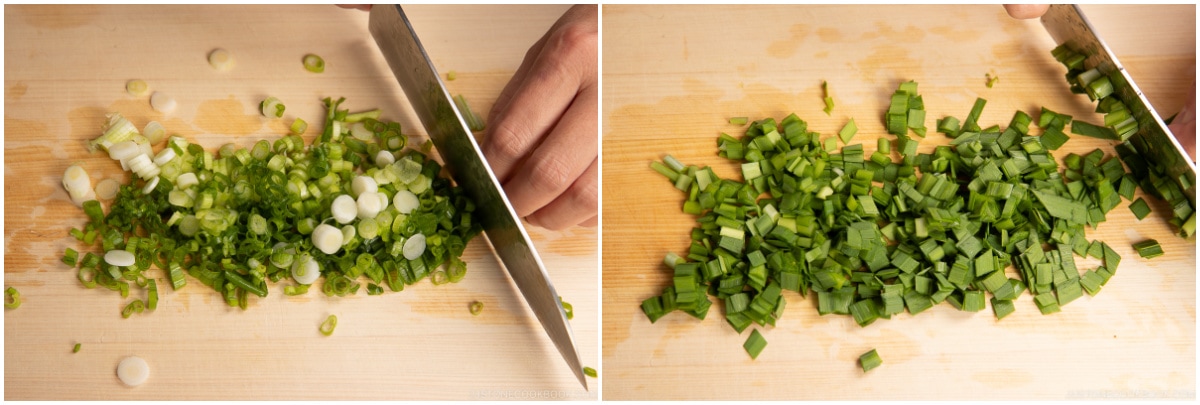
- Put 3 packets katsuobushi (dried bonito flakes) in a Japanese mortar and grind it with a pestle until powdered.
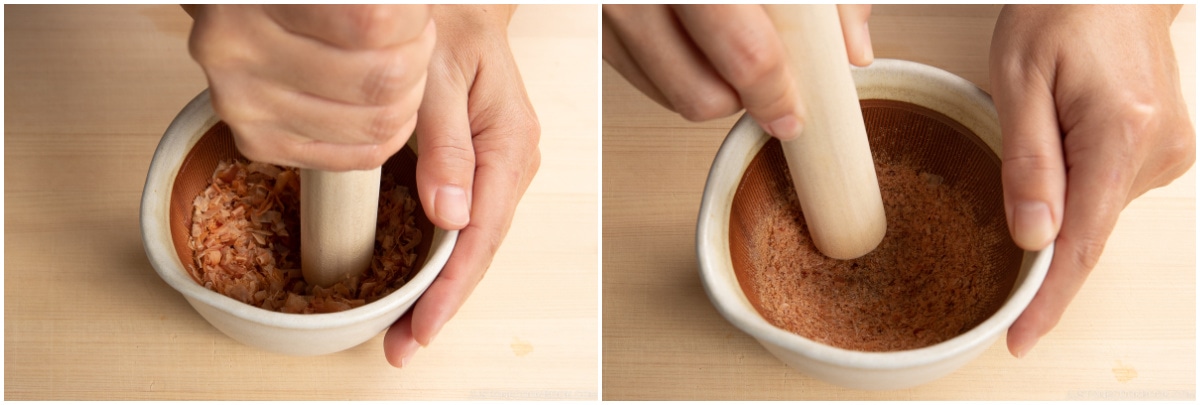
- Cut 1 sheet nori (dried laver seaweed) into pieces ¼ inch (6 mm) square.
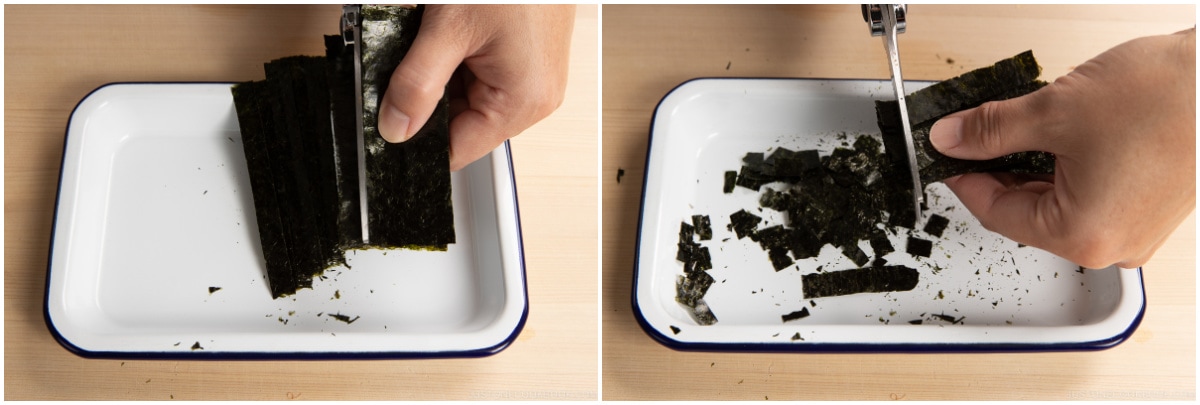
- Peel and grate the ginger (I use a ceramic grater) and measure ½ tsp ginger (grated, with juice).
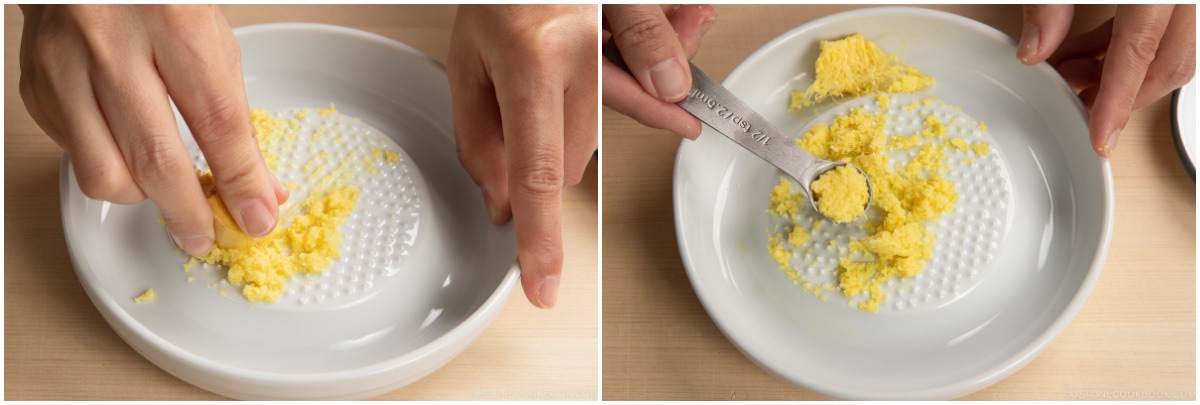
- Mince or crush 1 clove garlic (I use a garlic press) for cooking the meat and set aside along with the grated ginger from the previous step. Additionally, mince or crush 2 cloves garlic and set aside for serving.
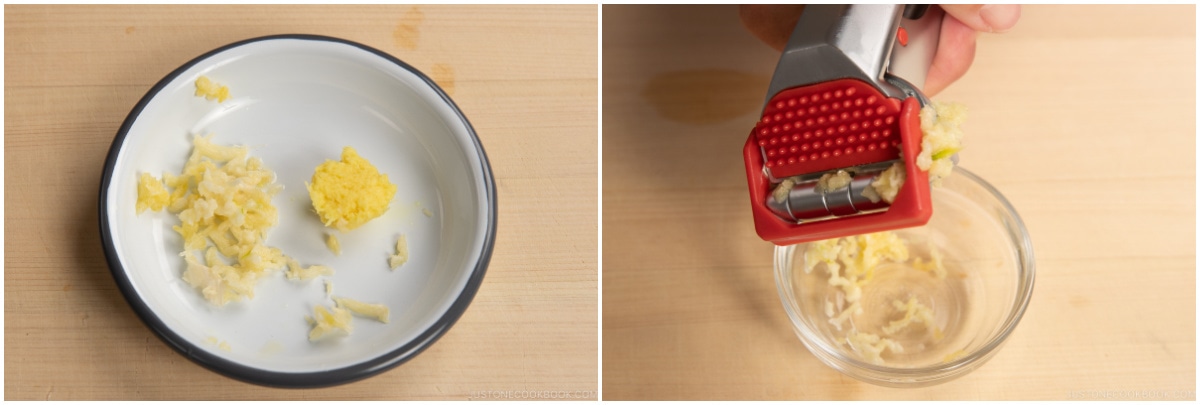
- Separate the 2 large egg yolks from the egg whites, if you haven‘t already. I use a slotted spoon to separate the yolks and whites of eggs that I cooked sous vide (I heated the eggs gently using an immersion circulator).
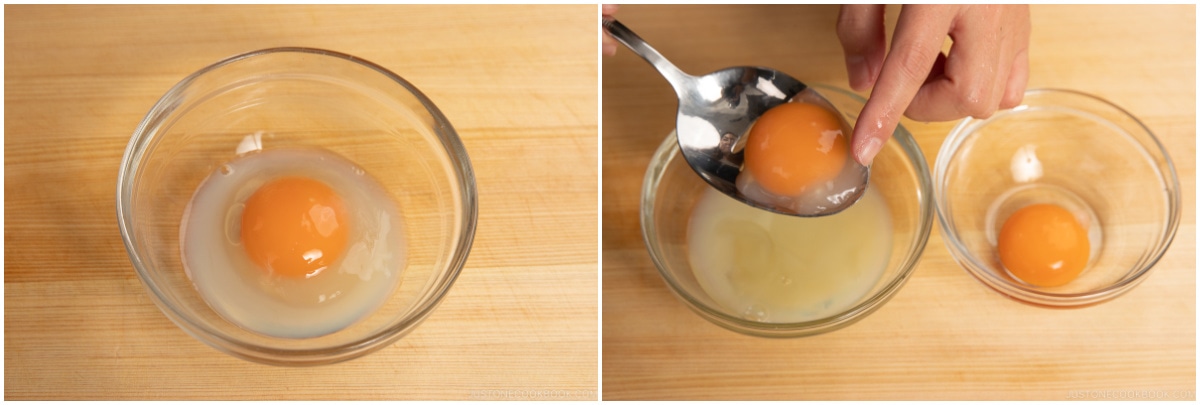
To Prepare the Seasoned Pork
- Heat a large frying pan on medium heat. When the pan is hot, distribute 1 Tbsp toasted sesame oil evenly and add ½ lb ground pork.
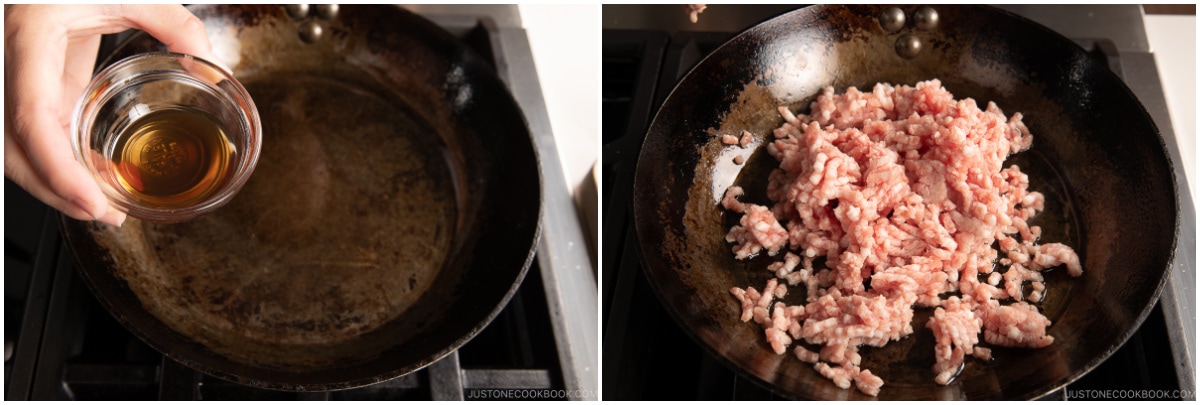
- Cook the ground pork until it‘s no longer pink. Add the grated ginger and minced/crushed garlic. Stir for 1–2 minutes until fragrant.
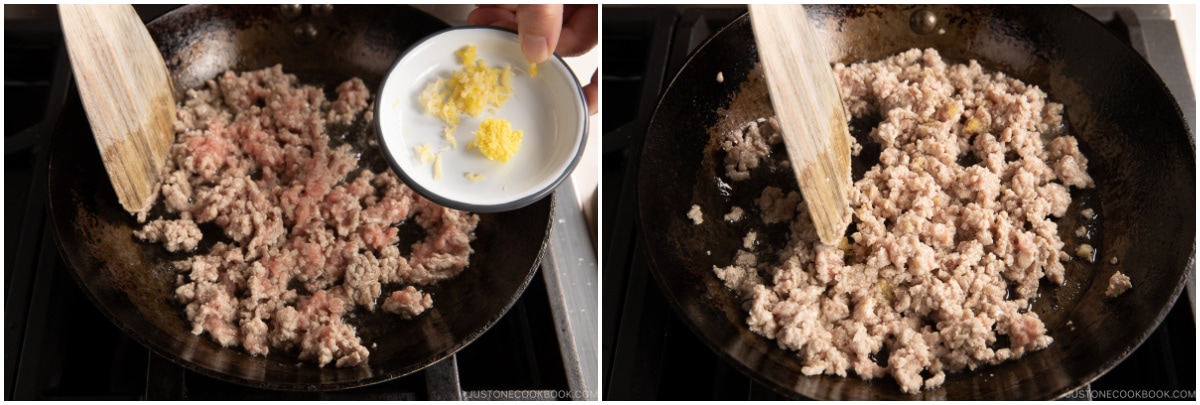
- Add 1 Tbsp sake and mix well.
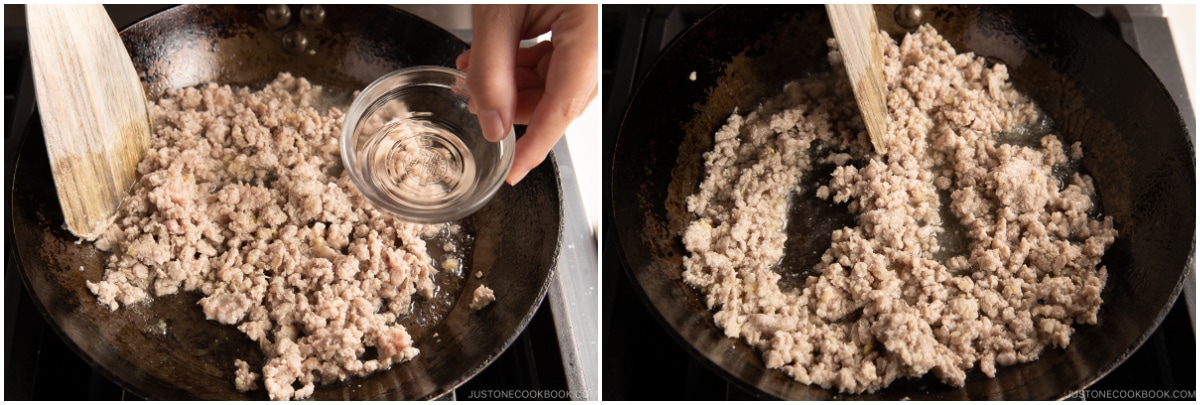
- Add 1 Tbsp doubanjiang (spicy chili bean paste) and stir until combined.
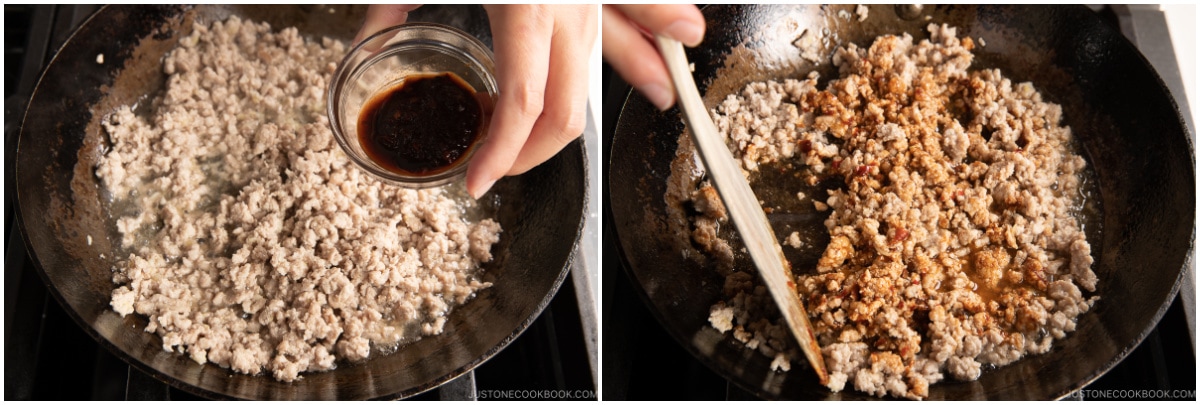
- Add 1 Tbsp soy sauce and 2 tsp oyster sauce and mix well.
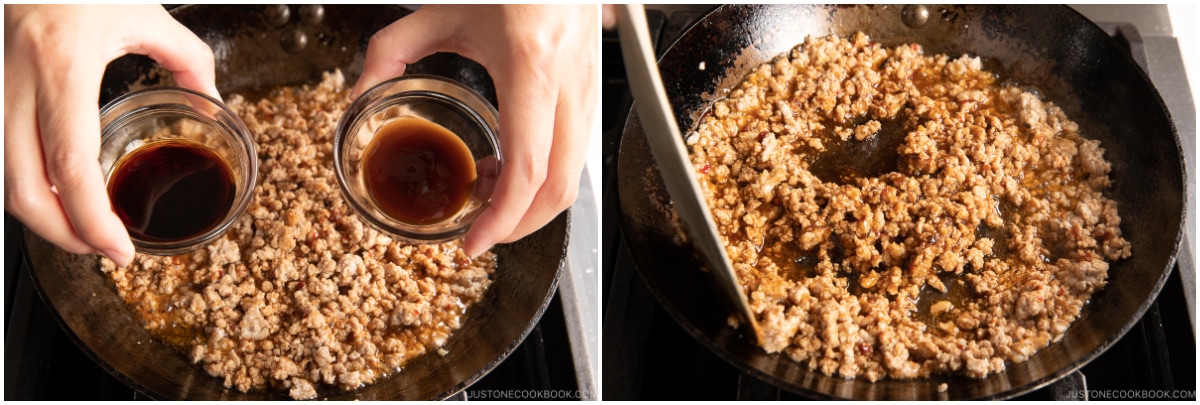
- Add 1 tsp sugar and 3 Tbsp chicken stock/broth and mix. Let it simmer on medium-low heat for 2–3 minutes. If the cooking liquid is evaporating fast, add some water (or more chicken stock). Leave some cooking liquid in the pan, and later, you will add this liquid to the serving bowls to season the noodles.
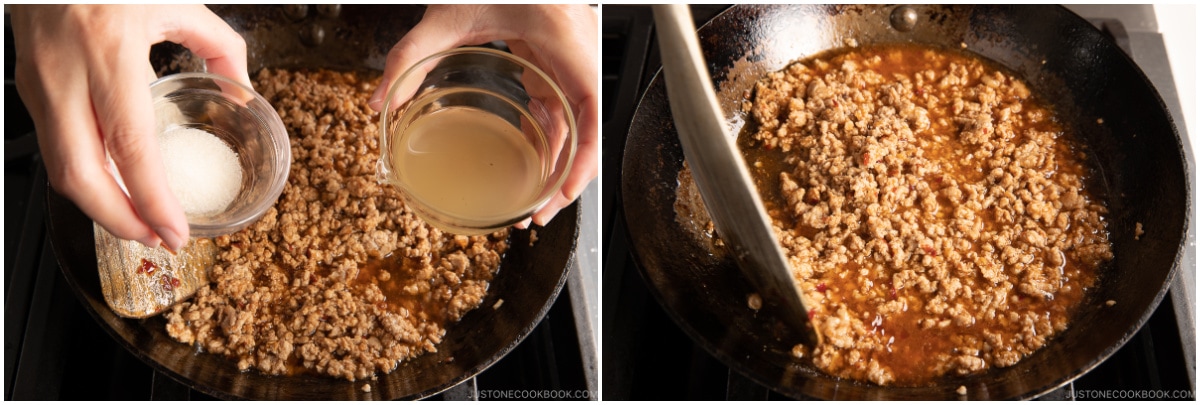
- Finally, taste the pork mixture and add ¼ tsp Diamond Crystal kosher salt, if needed. Turn off the heat and set it aside.
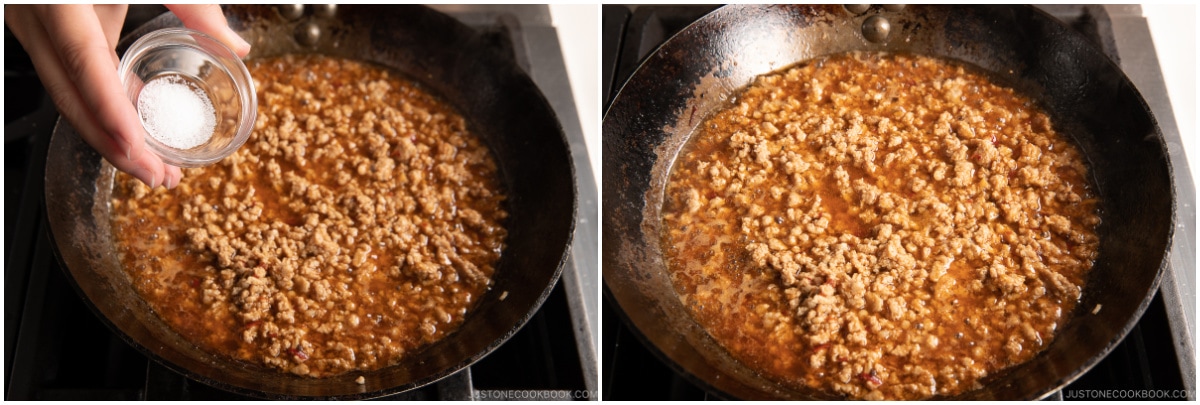
To Cook the Noodles
- Reheat the large pot of water to a boil. Separate and loosen the fresh noodles with your hands before adding to the boiling water. Cook 2 servings fresh ramen noodles according to the package instructions. I usually cook the fresh noodles al dente (about 15 seconds less than the suggested cooking time). Stir the noodles once in a while to make sure they do not stick to the bottom of the pot.
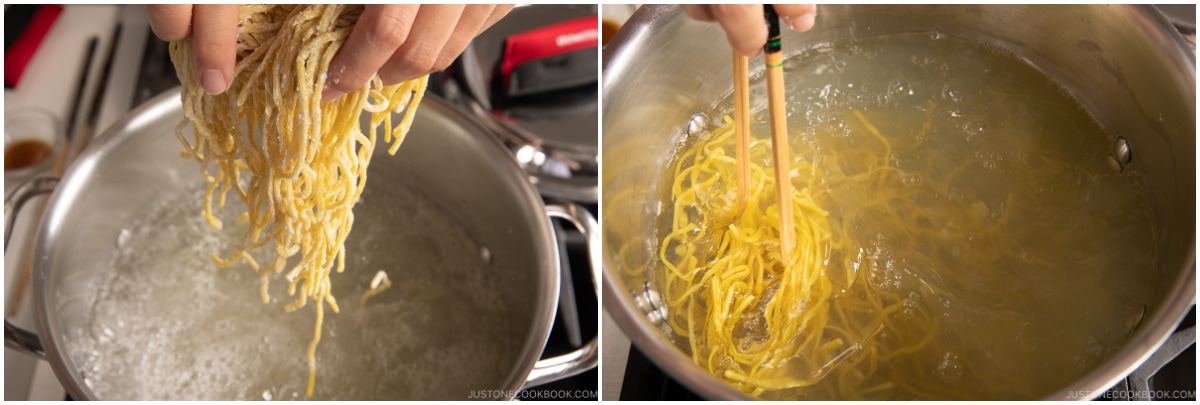
- Once the ramen is finished cooking, drain it in a sieve. Shake off any excess water.
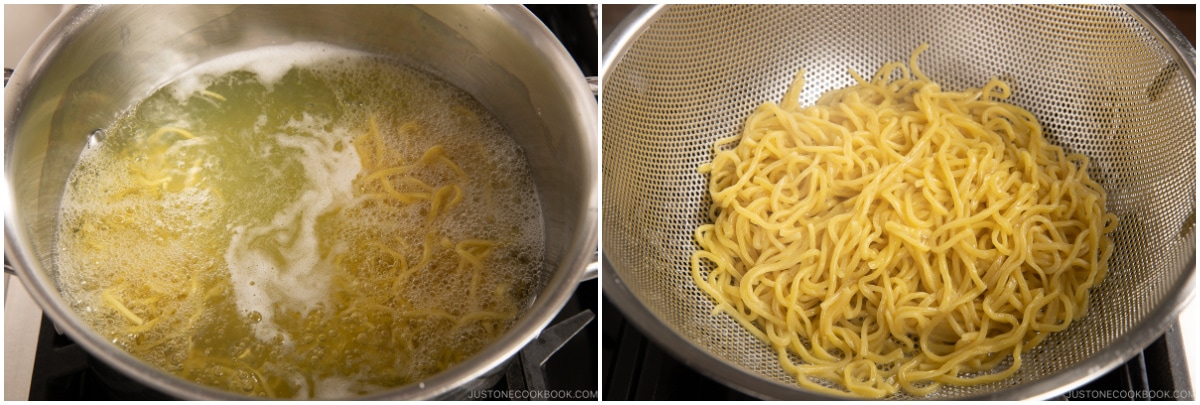
- Divide and transfer the noodles into individual ramen bowls. Next, mix 1 tsp toasted sesame oil and ¼ tsp Diamond Crystal kosher salt in a small bowl for seasoning the noodles.
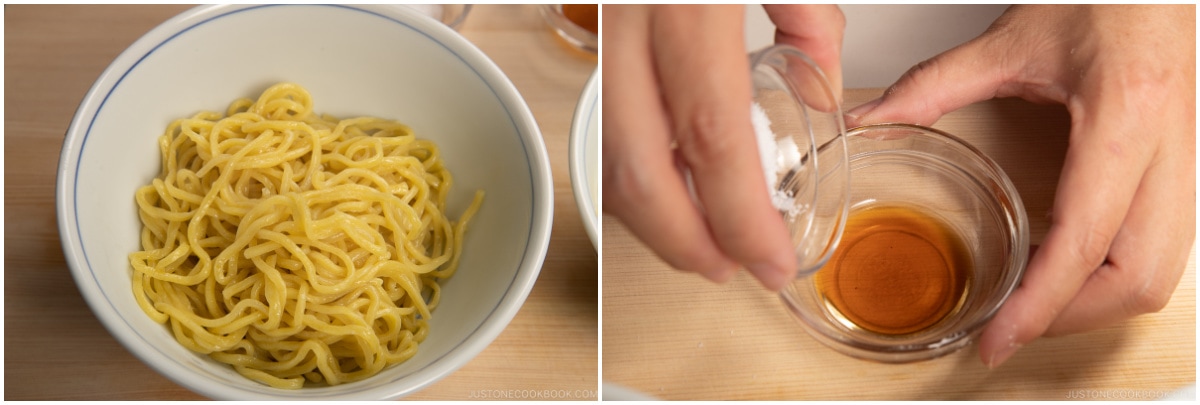
- Divide and drizzle the sesame oil mixture into the noodles. Use chopsticks to loosen the noodles and coat them well with the sesame oil mixture.
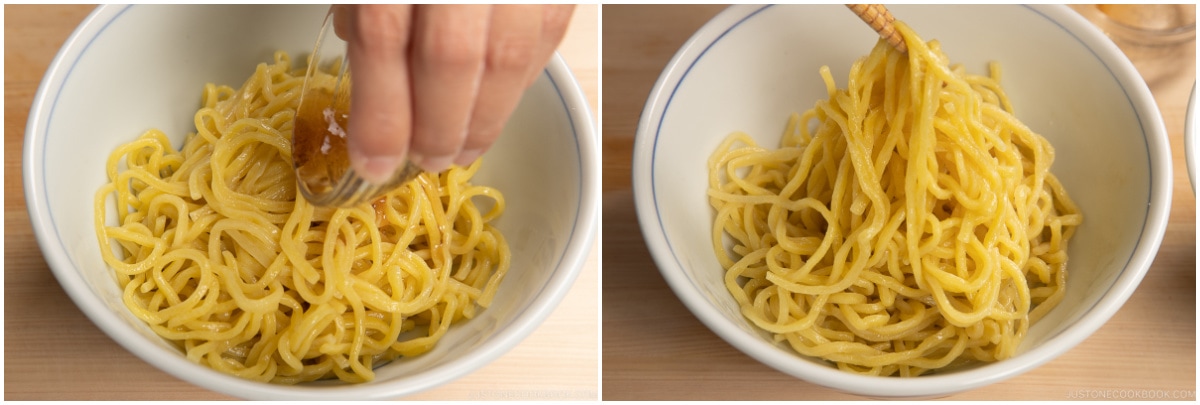
To Assemble and Serve
- First, put the seasoned pork with its cooking liquid on top and in the center of the noodles and create an indentation to hold an egg yolk. Next, divide and place the green onions, garlic chives, katsuobushi powder, nori seaweed, crushed garlic, and 2 Tbsp tenkasu/agedama (tempura scraps) in small piles around the pork. For each serving, place 1 large egg yolk in the indentation in the pork. Serve warm. Mix the noodles and toppings with chopsticks until the egg yolk is well incorporated and enjoy.
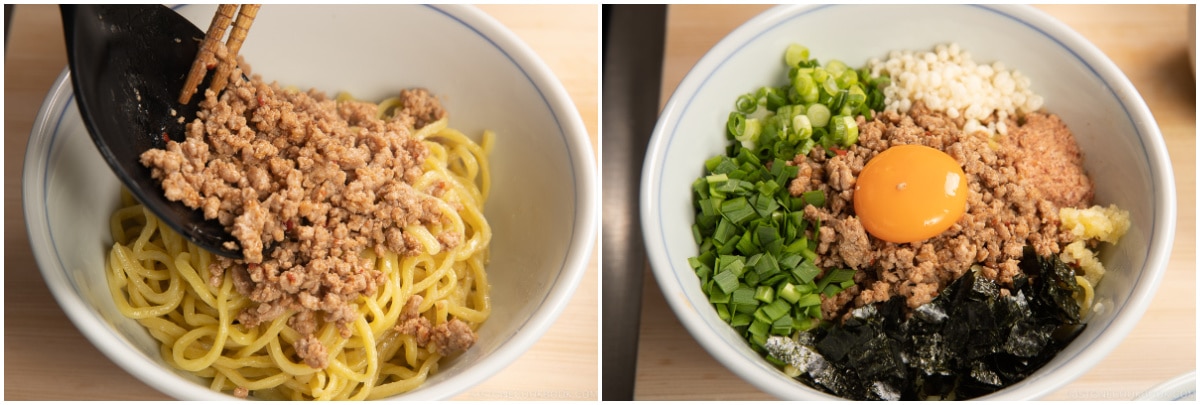
To Store
- You can keep the leftovers in an airtight container and store them in the refrigerator for up to 3 days. You can store the seasoned pork in the freezer for up to a month. I sometimes mix this seasoned pork with steamed rice to make rice balls for my kids' lunch.
Nutrition
Calories: 675 kcal · Carbohydrates: 35 g · Protein: 32 g · Fat: 44 g · Saturated Fat: 12 g · Polyunsaturated Fat: 7 g · Monounsaturated Fat: 17 g · Trans Fat: 0.03 g · Cholesterol: 290 mg · Sodium: 1487 mg · Potassium: 457 mg · Fiber: 3 g · Sugar: 3 g · Vitamin A: 1116 IU · Vitamin C: 11 mg · Calcium: 81 mg · Iron: 4 mg